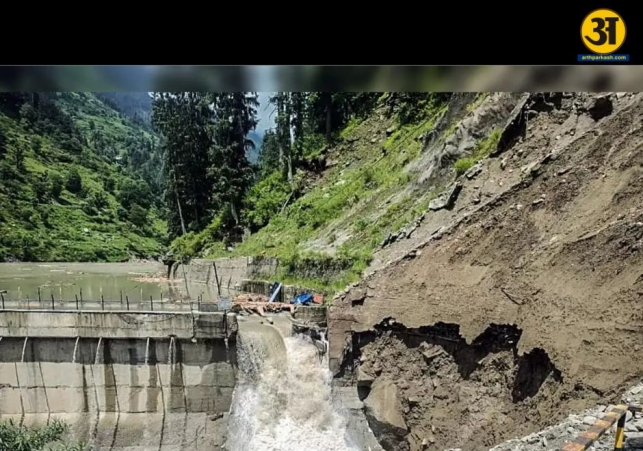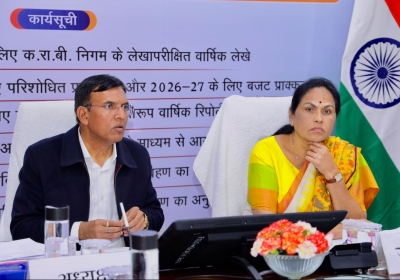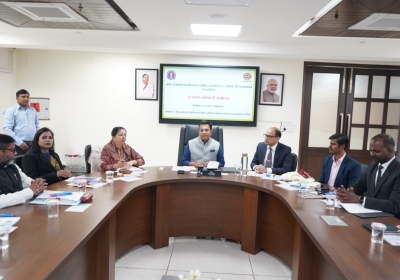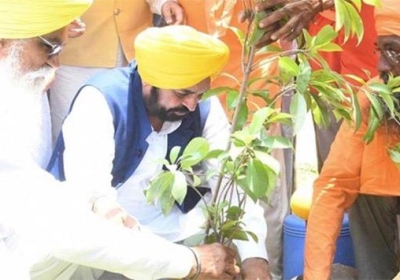
Himachal dam officials told to stay alert during monsoon
Himachal dam authorities asked to stay on high alert during monsoon season
The Himachal Pradesh government has directed all dam authorities in the state to remain on high alert during the upcoming monsoon season. This important instruction came during a high-level virtual meeting chaired by DC Rana, Director-cum-Special Secretary of Revenue and Disaster Management. The meeting was held to check the current safety situation of dams across Himachal Pradesh and to make sure all required safety measures are in place.
During the meeting, DC Rana made it very clear that dam operators must strictly follow all safety standards, especially during the monsoon months when the risk of heavy rainfall, flooding, and dam overflow increases. He reminded everyone that the Dam Safety Act, 2021, must be followed properly, along with all guidelines issued by the Central Water Commission (CWC).
Senior officers from 23 different dam authorities took part in this important review meeting. Officials from the state’s energy department were also present. The purpose of the meeting was to make sure that all dam authorities are fully prepared to handle any kind of emergency related to dam operations in the rainy season.
Focus on Safety Measures
The meeting focused on several key areas to improve and monitor the safety of dams. Here are the main issues that were discussed and reviewed:
1. Maintenance of Dam Structures
All dam authorities were told to carry out regular maintenance work before and during the monsoon season. Any cracks, leaks, or damages in the dam walls or gates must be repaired immediately. A well-maintained dam is less likely to fail during heavy rainfall.
2. Emergency Action Plans (EAPs)
Special attention was given to the Emergency Action Plans (EAPs) for each dam. These are pre-prepared documents that clearly lay out the steps to be taken during an emergency, such as a dam overflow or a structural problem. The plans include contact details of officials, warning procedures, and evacuation routes for people living nearby.
Each dam authority was instructed to update their EAPs regularly and make sure all departments are familiar with the plan. The officials stressed that quick coordination between the departments, especially during a flood or landslide, can save lives and property.
3. Early Warning Systems
DC Rana also reviewed the early warning systems installed at the dams. These systems include sirens, hooters, loudspeakers, and automated voice messages that alert the local population about danger. The working condition of these systems was checked, and officers were told to make sure they are always functional.
In addition, the dam operators were asked to complete any pending work related to dam break analysis. This analysis helps to predict what will happen if a dam fails or bursts. It shows how far the water will spread, how deep it will be, and which areas will be affected. This information is critical for rescue teams and emergency response workers.
4. Automatic Weather Stations (AWS)
The installation and performance of Automatic Weather Stations (AWS) were also reviewed. These stations provide real-time data on rainfall, temperature, humidity, and wind speed. Having this data helps dam operators to monitor weather conditions closely and take early action if there is any danger.
The dam authorities were told to make sure the AWS systems are functioning properly and are sending regular updates to the control rooms.
The officers were reminded that no department can work alone during a crisis. That is why strong inter-departmental coordination is very important. All departments—like the revenue department, disaster management teams, energy department, irrigation, police, and local authorities—must work together like one team.
The dam authorities were advised to conduct mock drills before the monsoon starts. These drills should involve all departments and even local villagers. The goal is to test how fast the warning system works, how quickly people are evacuated, and whether rescue teams reach the affected areas on time.
DC Rana also emphasized the need to create public awareness among people living near dams. They should be educated about the warning sounds, emergency contacts, and what actions to take during a flood warning. Many lives can be saved if the public is well informed and reacts calmly.
ALSO READ: Himachal CM assures full cooperation with CBI in Vimal Negi death case
ALSO READ: Himachal CM urges PM Modi to ban apple imports from Turkey
Use of Technology
The Himachal government is also encouraging the use of modern technology to improve dam safety. Digital monitoring tools, satellite tracking, weather prediction software, and real-time dam water level monitoring are being introduced. These tools can alert authorities even before a disaster happens and help them act faster.
The Central Water Commission (CWC) has already shared detailed guidelines about how to manage water storage, monitor rainfall, and open floodgates in a planned manner. The state government is ensuring that all dam authorities follow these guidelines seriously.
During the meeting, the Dam Safety Act, 2021, was discussed in detail. This law was passed by the central government to make dam safety a national priority. It requires dam operators to conduct regular inspections, prepare safety reports, install warning systems, and appoint safety officers. The act also provides a legal framework for punishing those who fail to follow safety rules.
The law applies to all dams that are more than 15 meters high or have a storage capacity of more than 60,000 cubic meters. Himachal Pradesh has several such large dams that store huge amounts of water and generate electricity for the state and nearby regions. That’s why it is important to take every step to ensure their safety.
In summary, the Himachal Pradesh government has taken a very serious approach to dam safety this monsoon season. The virtual meeting held on June 2, 2025, has helped review the safety of all major dams and reminded the officials of their responsibilities.
From maintenance work and early warning systems to emergency planning and team coordination, every aspect of dam safety is being addressed in detail. The government is following all the national laws and using the latest technology to protect people’s lives and property.
As the rainy season approaches, these efforts are expected to reduce the risks of flooding, dam failure, or water-related disasters in the state. With constant monitoring, quick response teams, and better communication between departments and the public, Himachal Pradesh hopes to stay safe during the 2025 monsoon season.





